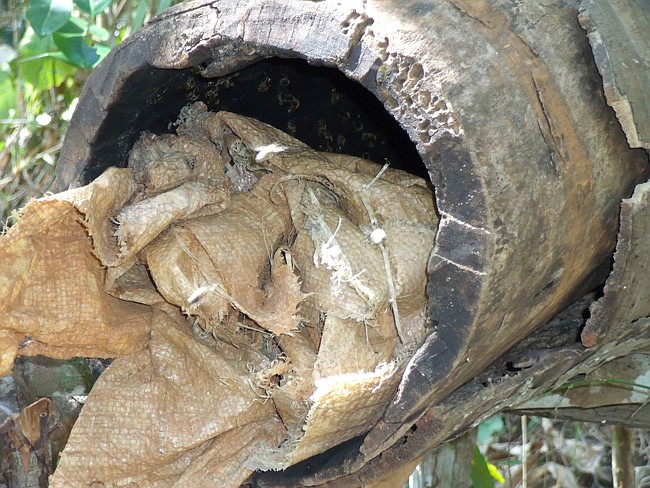- April 18, 2024
-
-
Loading

Loading

Haiti is the poorest country in the Western Hemisphere. The devastation from recent hurricanes and earthquakes compelled me to visit the country to see if I could help. I am a beekeeper, and I went to Haiti to teach them modern beekeeping practices and show them how to utilize products from the hive.
I saw many bee yards and met many Haitian beekeepers. Most of the hives are kept in logs, making them difficult to work with. With the lack of bee suits, they implement the fire and run technique for extracting honey. They put kindling on a plank of wood, light it up, blow the smoke/fire into the entrance of the log, reach in to grab the honey, and run.
In general, their bees are healthy, but hungry. Many of the trees whose blossoms sustained the bees in the past have been harvested for coal to make fire, their primary source of heat.
On subsequent trips to Haiti, I was asked to hold classes in candle making. Before leaving on the adventure, I considered the raw materials that would be available in Haiti for making candles and experimented by using products that were readily available in my backyard.
Candle making requires wax, wick, metal container, wax mold and heat. I hoped that wax would be available, but I packed several pounds of raw beeswax in my luggage just in case. Although they do have the ability to get wax from their hives, the wax is precious and difficult to obtain. I also brought several hundred yards of wick. (While there, I taught them how to braid wick out of threads from old clothing, dip it in beeswax and make more wick for when the wick I brought ran out.)
Haitians don't generally have pots and pans. They do most of their cooking over an open charcoal fire with empty cans, using the partially open lid as a handle. I packed several pots and pans in my luggage since I knew that cooking with the cans was a requirement, but I could demonstrate the task at hand much more easily with modern utensils. I donated everything to the workshop when I left.
I also needed a mold for the candles. After a good bit of searching on the Internet, I found sand candles. They can be made by simply digging a hole in pile of sand, rock or dirt. The candles were a huge hit, and my students quickly added island flair to come up with designs of their own.
We also made liquid soap with the bar soap that is readily available on the island. My Haitian students thought of many uses for the soap, such as washing their vegetables, and were curious about how they could make further use of products from the hive.
Many beekeepers have been to Haiti before me, and I am sure that many more will follow. I hope that we can all keep their best interests in mind and provide ideas and advice that works for them. The transfer of technology must always consider their limitations for obtaining raw materials. Assume nothing. For instance, even though the island is covered with sand, we had difficulty obtaining a bucket and shovel and ended up using a plastic bag and our hands to get the sand for the candles.
Jean Vasicek owns Winter Park Honey with husband Scott Shurman. Her trip sponsors were Haiti Help Med Plus, http://www.facebook.com/HaitiHelpMedPlus, FAVACA, http://www.favaca.org/ and Winter Park Honey, http://winterparkhoney.com